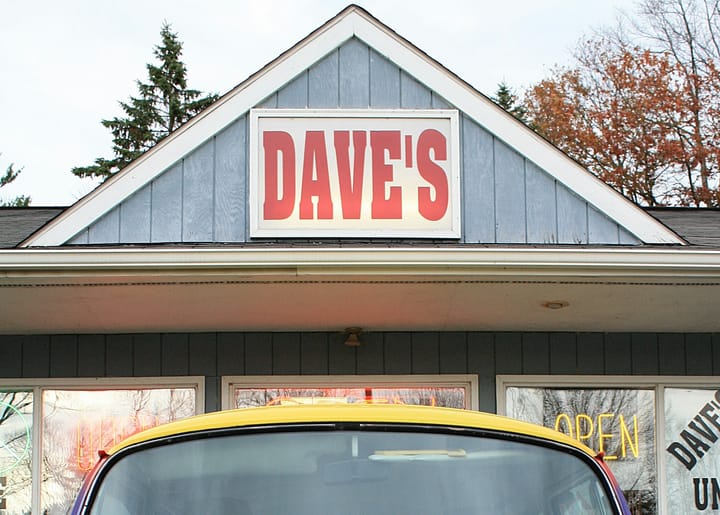How To Tell The Truth In Advertising (It's Harder Than You Think!)

Most people inherently know how to tell the truth. The challenge, however, is that the truth often becomes harder to express for those working in advertising. You may not want to question the brief or push back against a client’s demands. You might be under tight deadlines or reluctant to be the only one in the room to disagree and point out the obvious. There is often peer pressure to go in a certain direction, and before you know it, the truth gets lost.
The reality is that most people in the industry genuinely want to tell the truth. They understand that authenticity is essential to building trust with audiences. But somewhere along the way, amidst the layers of approvals, revisions, and strategic pivots, the truth becomes distorted. This article explores effective tactics for telling the truth - in an era of scepticism and misinformation - and provides real-world examples of campaigns that successfully leverage honesty to connect with their audiences and build trust.
1. Expose the Truth
One of the most powerful ways to tell the truth is to expose hidden or uncomfortable realities. This tactic involves revealing what’s often ignored or unseen, bringing more profound, overlooked truths to light. Exposing these truths can create strong emotional connections and prompt audiences to rethink their views.
Take CoorDown’s "Ridiculous Excuses Not to Be Inclusive" campaign, for example. This campaign used humor to expose the absurd excuses that people make to exclude those with Down syndrome. Through a series of comedic scenarios, it highlighted how exclusion is often justified by baseless reasons, encouraging a more inclusive mindset. Similarly, Go Gentle Australia’s "Stop The Horror" campaign featured a whistleblower—a terminally ill man—revealing the brutal truth about suffering due to the lack of euthanasia laws in Australia, aiming to change public perception and policy.
"Generation Lockdown" is another campaign that exposed the harsh reality of a child’s traumatic experience during school safety training, spotlighting the devastating effects of gun violence and the need for stricter gun control. These campaigns prompted meaningful dialogue and change by making these hidden realities visible.
2. Reverse the Truth
Flipping the expected narrative is another effective way to tell the truth in advertising. By presenting a familiar situation from an unexpected perspective, brands can reveal hidden or less acknowledged truths, often prompting audiences to see things in a new light.
CALM’s "Last Photos" campaign, for example, challenges the stereotype that people who are suicidal look distressed. Instead, it reveals their last photos as happy and carefree, prompting viewers to rethink their assumptions about mental health. Dove’s "Reverse Selfie" campaign tackles the damaging effects of heavily edited selfies by reversing the editing process to reveal a young girl’s natural, unedited appearance, promoting real beauty.
OMO’s "Dullest Ad in History" campaign took this tactic further. The brand highlighted the mundane reality that children spend less time outdoors by depicting boring activities to provoke a reaction and raise awareness about the importance of active play. This clever reversal made a powerful statement about the value of outdoor play and the need to encourage it.
3. Tell the Honest Truth
Being straightforward and brutally honest about facts other brands might shy away from can build credibility and trust. When brands own up to the truth—even if it’s uncomfortable or unflattering—they can create a deeper bond with their audiences.
For instance, Bodyform’s "Blood Normal" campaign broke long-standing taboos by showing period blood as red rather than the sanitized blue liquid typically used in ads, normalizing menstruation and challenging societal discomfort around it. Similarly, Dumb Ways to Die by Metro Trains used humour (and Hall of Famer creative execution) to convey the simple truth that many accidents are careless and can be prevented by paying attention, creating a memorable and impactful public safety message.
The "Bad Passwords" campaign by the Swedish Internet Foundation (SSF) took a bold and direct approach by using fun and shocking out-of-home ads to tell people their passwords are weak, encouraging better online security practices. In these cases, honesty led to greater trust and engagement with the audience.
4. Reveal Absurdity
Another way to tell the truth effectively is to highlight the absurdity of the status quo by contrasting it with an exaggerated or unexpected truth. This tactic involves pointing out inconsistencies or irrationalities in societal norms or behaviours.
"Kinder Egg vs. Guns" by Moms Against Guns is a poignant example. The campaign juxtaposed the banning of Kinder Eggs (a chocolate treat) for safety reasons with easy access to firearms, highlighting the absurdity of the situation. "Blacked Out History" by OBHS demonstrated the lack of Black history in textbooks by literally blacking out non-Black sections, emphasizing the gaps in education.
The "Add the M" campaign by YWCA and Rethink challenged the absurdity of labelling women’s sports with their gender while men’s sports remain unmarked. By adding an “M” to men’s sports leagues (like MNBA or MPGA), the campaign called attention to the inherent bias in sports branding and sparked a conversation around equality.
5. Reflection
Encouraging audiences to reflect on their biases or misconceptions by presenting a different viewpoint can be a powerful way to tell the truth. This tactic involves creating campaigns that make people reconsider their preconceptions or behaviours.
Dove’s "Real Beauty Sketches" allowed women to see how others perceive them versus how they see themselves, promoting self-esteem and challenging conventional beauty standards. Similarly, "Love Has No Labels" by Ad Council encouraged people to confront their implicit biases by showcasing diverse people in love and friendship, regardless of race, religion, or sexual orientation.
In "What’s Wrong With Owen?" by GE, a protagonist excited about his new job at GE faces scepticism from his friends, who assume it must be boring. This campaign used humour to prompt viewers to rethink their perceptions of the brand and recognize its innovative side.
6. Make the Invisible Visible (Whistleblowers)
Bringing hidden or ignored realities to the forefront of public consciousness is a vital strategy for brands that want to be seen as truthful and transparent. This tactic educates and informs the audience about lesser-known facts or realities.
Dove’s "Evolution" campaign exposed the artificial processes behind beauty standards by showing a model's transformation from ordinary to flawless through makeup and digital alteration. Zeeman's "High-End Sneaker" campaign revealed the secrets of the high-end sneaker industry by creating an equally stylish yet much cheaper alternative, challenging the idea of luxury pricing. Meanwhile, Petfished by RSPCA unveiled the dark secrets of the pet trade, encouraging consumers to adopt responsibly.
Opportunities
- Leverage Honest Messaging: Develop campaigns that tell the truth about your product's benefits or the societal issues your brand cares about. Transparency is critical to building trust.
- Use Humour and Parody to Engage: Humour can be a powerful tool to communicate uncomfortable truths in an engaging and memorable way.
- Challenge Existing Narratives: Flip the script on common assumptions or biases to present a new perspective that captures attention.
- Make the Hidden Visible: Highlight lesser-known facts or realities to educate and inform your audience, creating a deeper connection with your brand.
Summary
Telling the truth in advertising isn't just a tactic—it’s a strategy for building long-term relationships with your audience. By exposing hidden truths, reversing expectations, embracing honesty, revealing absurdities, and encouraging reflection, brands can break through the noise and connect meaningfully with their audiences. In a world where consumers are more informed and sceptical than ever, truth-telling is the right thing to do and the smart thing to do.
By mastering these techniques, your brand can stand out in a crowded marketplace, earn consumer trust, and drive real impact. So, ask yourself: Are you ready to tell the truth?



